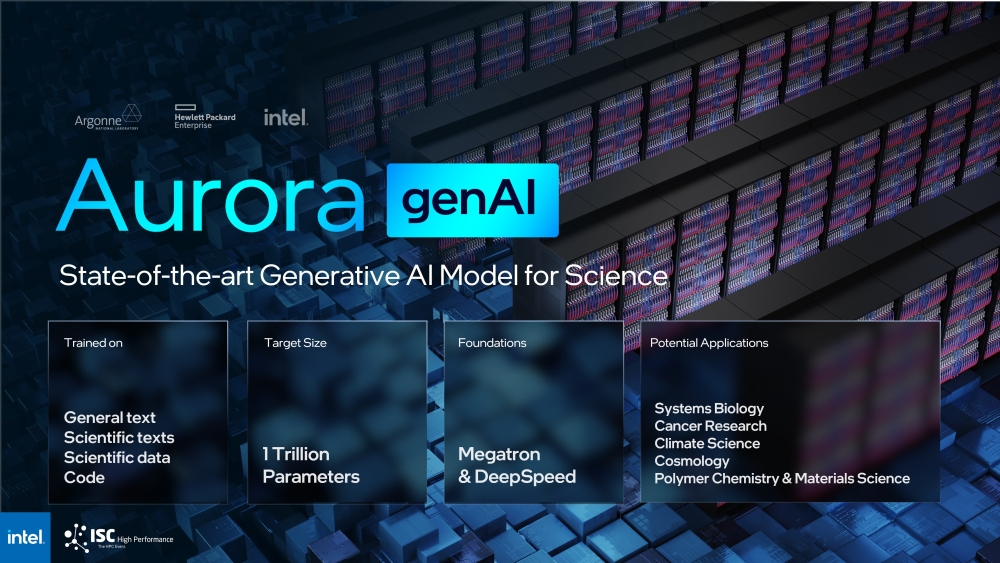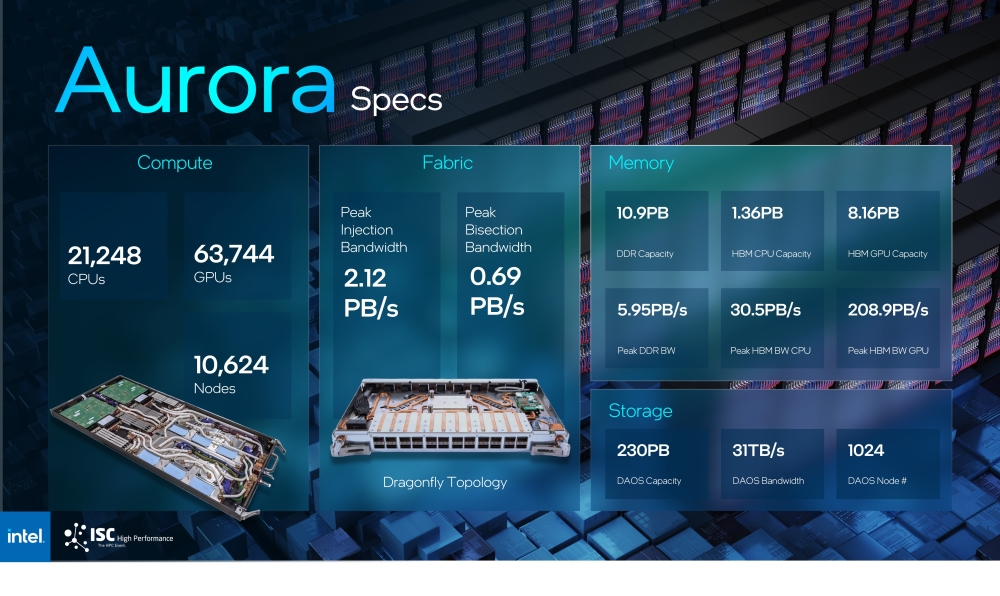The project, which is an international collaboration that includes Intel, HPE, Department of Energy laboratories, U.S. and international universities, nonprofits, and international partners, such as RIKEN, will create generative AI models for science will be trained on general text, code, scientific texts and structured scientific data from biology, chemistry, materials science, physics, medicine and other sources.
The resulting models will include as many as 1 trillion parameters that will be used in a wide range of scientific applications, including the design of molecules and materials to the synthesis of knowledge across millions of sources to suggest new and interesting experiments in systems biology, polymer chemistry, and energy materials, climate science, and cosmology. The model will also be used to accelerate the identification of biological processes related to cancer and other diseases and suggest targets for drug design.

“The project aims to leverage the full potential of the Aurora supercomputer to produce a resource that can be used for downstream science at the Department of Energy labs and in collaboration with others,” said Rick Stevens, Argonne associate laboratory director.
According to the provided details, Intel has completed the physical delivery of more than 10,000 blades for the Aurora supercomputer, and the full system, built using HPE Cry EX supercomputers, will end up with 21,248 Xeon CPUs, 63,744 Xeon Max series GPUs, and 1,024 DAOS storage nodes. It uses HPE Slingshot high-performance Ethernet network.

The Aurora is expected to offer more than 2 exaflops of peak double-precision compute performance. Intel was keen to note that the Aurora performance on real-world science and engineering workloads is up to 2x faster compared to AMD MI250 GPUs, and 20 percent faster than Nvidia H100 on the QMCPACK quantum mechanical application.




